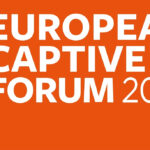If this is a problem in public health care, it is no less important in private health care, a service used by 11 million users. The patient does not have a unique medical history and even doctors from the same company cannot access the history that the patient has generated with that insurer.
If a patient’s medical record is not accessible to the patient himself or to any or very few of the medical professionals attending him/her, the usefulness it provides seems very limited. The additional work that doctors do in their daily practice by filling in data on the services they have provided and the tests that are performed is largely wasted.
Access does not exist between public and private services, nor between the services of the different autonomous communities, sometimes not even in the services of different hospitals or centers in the same province. Certainly, in this scenario, it seems utopian that this interconnectivity will occur between all services in the European Community, let alone that the patient will have access to all of it.
The article asks: “How is it possible that something so seemingly simple is not possible?” Two factors are cited in the response:
- “Health information is very sensitive and data protection makes it hard to access from anywhere.”
- “Each autonomous region invested in its own computer system and it costs a lot of money to make them homogeneous and connect them.”
We would like to analyze whether the problem really lies here. Without underestimating these factors, because everything counts, they may not be the ones that are acting as a deterrent:
With regard to the protection of health data, health data belong only to patients and health workers must contribute to updating this information in their medical records. Of course, this information has to be accessible only under certain parameters, but for that there is a legal framework that protects this data. There is also technology to ensure restricted access that can be solved in various ways, for example with a security pin validation system when the patient wants his or her data to be consulted by treating physicians.
When it comes to the investment needed to interconnect information and standardize data, money doesn’t seem to be a problem either. The Ministry of Health has presented to the autonomous communities the Digital Attention Plan in Primary Care, which has among its objectives, to expand the scope of the patient’s clinical history and which is endowed with 70 million by 2022 and 160 by 2023. It seems quite a lot.
Connecting the systems of one or several repositories does not require such complex projects as to be considered unfeasible from an economic point of view. More complex is the need to standardize this data. Certainly, doing it with the existing patient information would require significant prior work, but what about starting to do it from now on with the new services and progressively incorporating the history? For this, it is enough that the information that feeds these systems is homogeneous, that is, use the same classification and cataloging parameters of diagnoses and treatments. There are already unique databases with this information, standardized international encodings, which can be used by mapping the insertion of the information to facilitate convergence.
If the law and technological advances protect patient data. If there is technology that allows homogenizing the information of the medical records and that there is a repository or several integrated ones where the different authorized agents can access. If this also requires an affordable financial investment, what is really the problem?
Companies that are dedicated to software development and that are familiar with the technological solutions that can be provided, do not see difficulties in these two factors. Perhaps the reflection that needs to be done is whether the problem, both in public and private healthcare, is actually the lack of will to share and the resistance to connecting systems, in short, the lack of determination to really put the focus in patient care.






